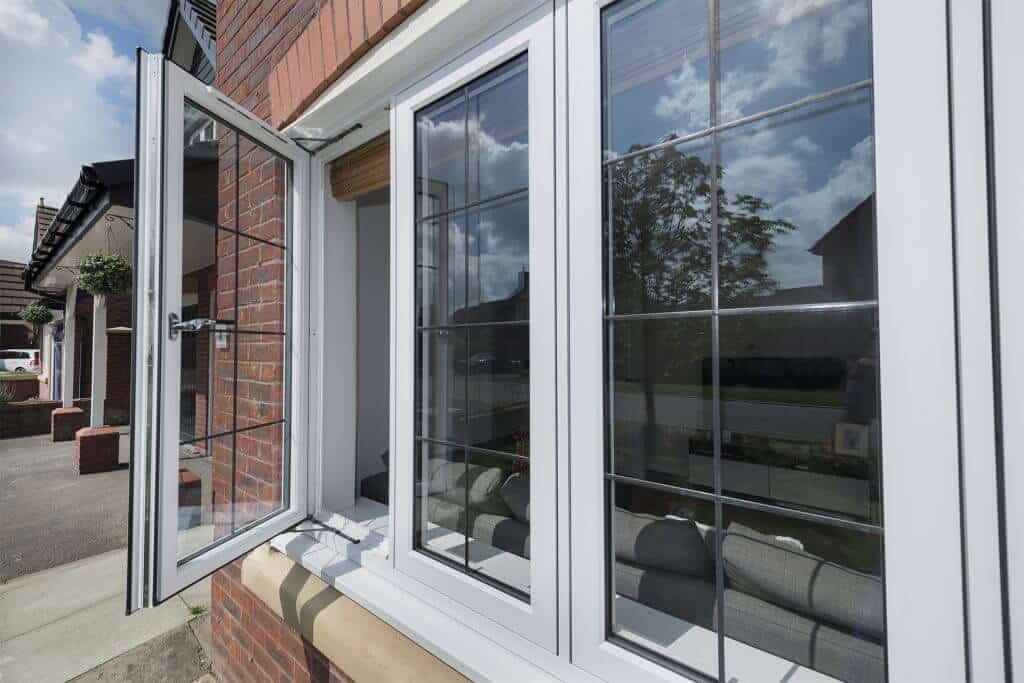It’s important to ensure new windows are installed properly in order to get the benefits they promise. Installing them yourself can be a time-consuming task, and without the know-how can lead to unsafe results. If you’ve read our uPVC windows buying guide and decided on the right windows for you, perhaps you’re wondering how they’re fitted. Our uPVC window packages come with installation included. We have a dedicated and experienced team of people available to measure and fit your windows, so you don’t have to.
We like to be as transparent with our process as possible. So, we’ve put this step-by-step guide together to help you understand the in’s and out’s of installing uPVC windows.
How to Fit uPVC Windows
uPVC windows fitted by a professional can add extra costs but, we don’t have any hidden fees. The measuring and installation are included in the price. If you want a hassle-free purchase, our engineers are able to guide you through the entire process – saving you a lot of time.
If you’re wanting to replace an old window, don’t remove the frame prior to your appointment. We use the new window as a measuring tool to ensure that the window is the right fit – you wouldn’t want to take your old window out to find that the new one isn’t the correct size. There will be some leeway in the window – there should be a 5mm gap around the frame – this is entirely normal, so don’t worry that your frame is too small.
Once you’re happy with the size of your frame, we’ll run a sharp blade around the edge of your old window to break the seal between the frame and the wall. Removing as much of the glass as possible, to reduce the weight of the frame, once it’s been removed from the wall. We’ll then remove all external silicone and brick corners to release the frame from the wall.

Now for installation…
You can fit your uPVC window from the inside, however, due to the plaster and internal decorations, fitting the window from the outside is a much smoother process. If you decide that you’d prefer your engineer to fit your window from the inside, please be aware that you’ll need to replaster the perimeter of the window frame.
uPVC windows can be fitted into a timber frame, to do this, the process is the exact same as if you were fitting a uPVC window into a uPVC frame.
The window is then carefully positioned into the space that the old window left behind. As there needs to be a 5mm expansion gap, the window must be centralised with packers inserted around the entire frame to level it.
Once the frame is in the correct position, we’ll use a drill to create fixing holes into the sides of the frame. For the top and bottom corners, you need to drill 150mm into the frame. All windows require a minimum of 2 fixings per side. For the side holes, you need to drill 600mm into the frame.
Using the packers at the fixing points, we fix the sides of the frame to the wall first. Then moving on to the top and bottom fixing points. It’s important not to over-tighten any of these fixings. There is a 3mm hollow section in the frame, if you over-tighten the screws, you could end up with a hole in the frame. And, it’ll make it incredibly difficult to remove the frame in the future.
Now we need to seal the bottom section of the window to ensure moisture can’t get through any gaps. The best sealant to use for external windows is silicone.
Once the sealant is dry and the window is secure, we use a chisel to remove excess packers.
For the glazed-windows, much like with the frame, we use glazing platforms around each aperture to centralise the glass. We’ll then place the glass into position and use a nylon mallet to carefully tap the beading into place. Installing the horizontal beads before installing the vertical beads.
Once we’ve cleaned off the glass and double-checked the measurements, we can then seal the window into place. Using silicone, we’ll apply a layer between the window frame and the brick. Top tip: by wetting your finger and running it along the silicone, you’ll create a smooth finish.
Can uPVC Windows be Adjusted?
uPVC windows are very durable. And, while it’s unlikely that they’ll need adjusting, it can be done. As with any window, uPVC windows can be resealed. If you have damp on your window panes it’s likely that they just need a reseal. However, if there’s damp on both panes, you may need to purchase replacement glass.
If you’re experiencing draughts coming from your window, it may be that the screws in the frame need adjusting.
To adjust a uPVC window to prevent draughts, you need to determine whether the window needs raising or lowering. If the window doesn’t completely close, you need to be adjusting the window downwards. If the window sticks against the frame or sealant when closed, you need to adjust the window upwards.
With the window open, you’ll see a metal bracket on either side of the window. To adjust the window, you need to loosen the screws on the piece of metal that is attached to the window – not the piece that’s attached to the window frame. Loosen the screws on both sides of the window frame – only loosen about 1 turn of the screwdriver. Once you’ve done this, move the window up or down, depending on the issue that you’re having, and tighten the screws back up.
In Conclusion
Installing uPVC windows can take time and effort, but with the backing of a professional, they can be pretty simple to install – not to mention the security that you’ll have from knowing it’s been installed correctly.
 10-year guarantee
10-year guarantee Made in Britain
Made in Britain Variety of finance options
Variety of finance options 10+ years' experience
10+ years' experience